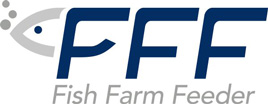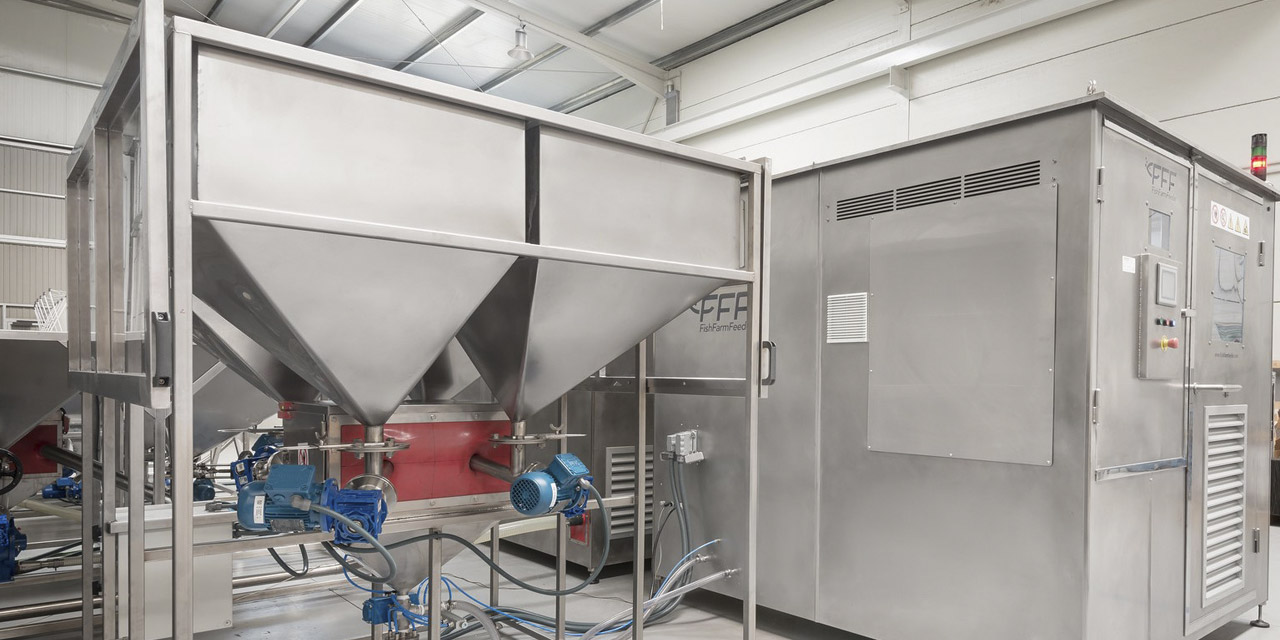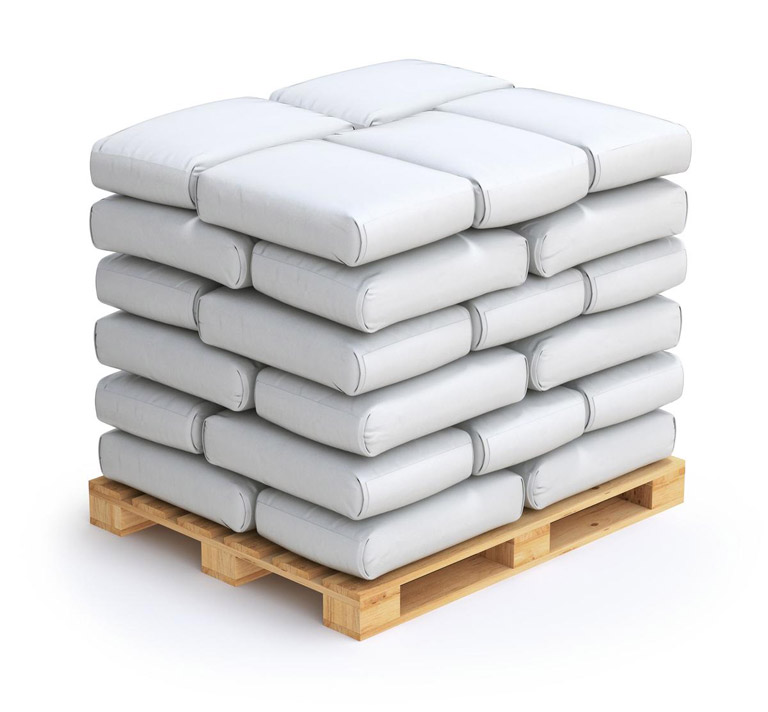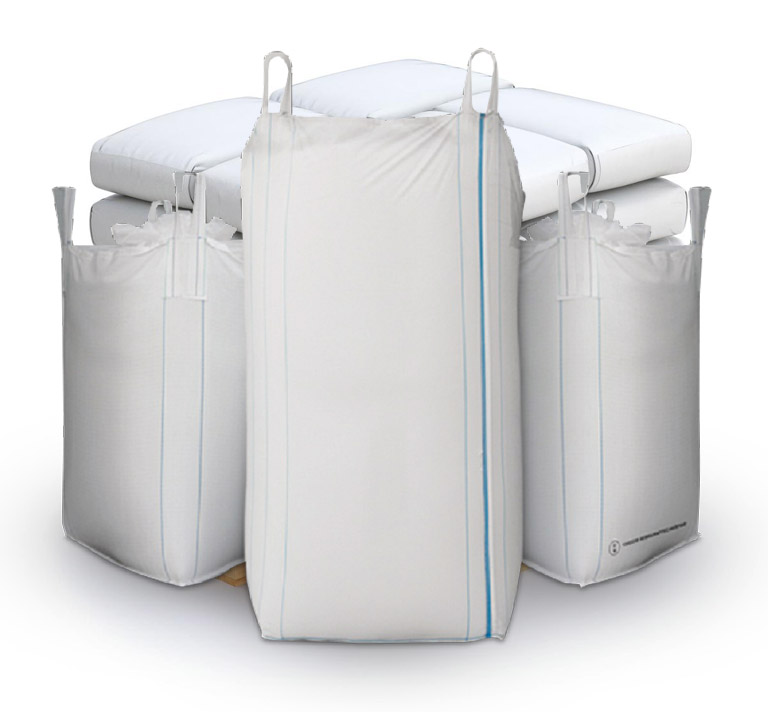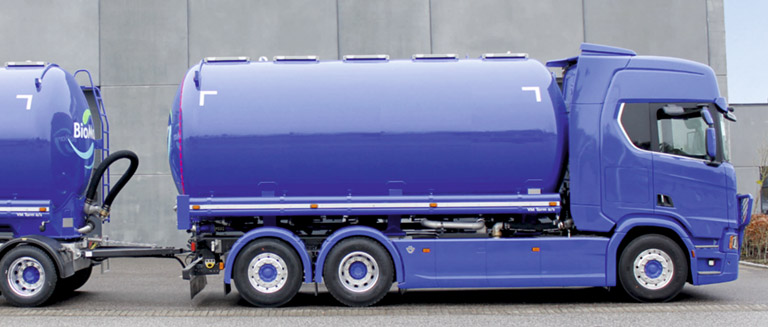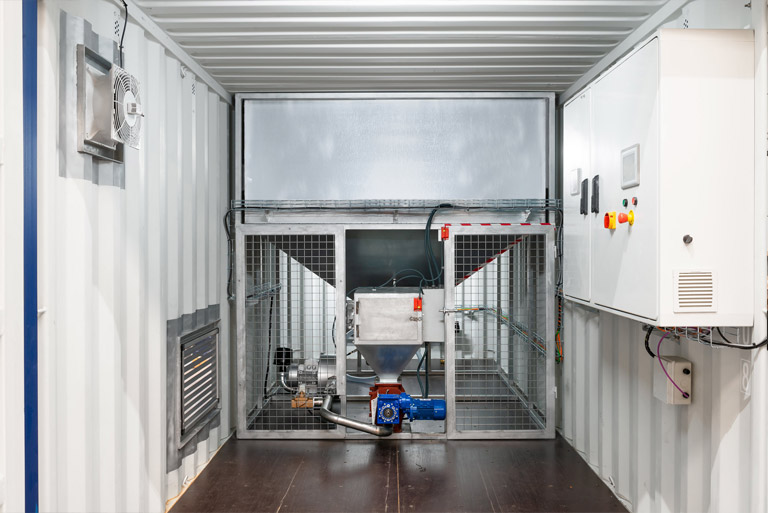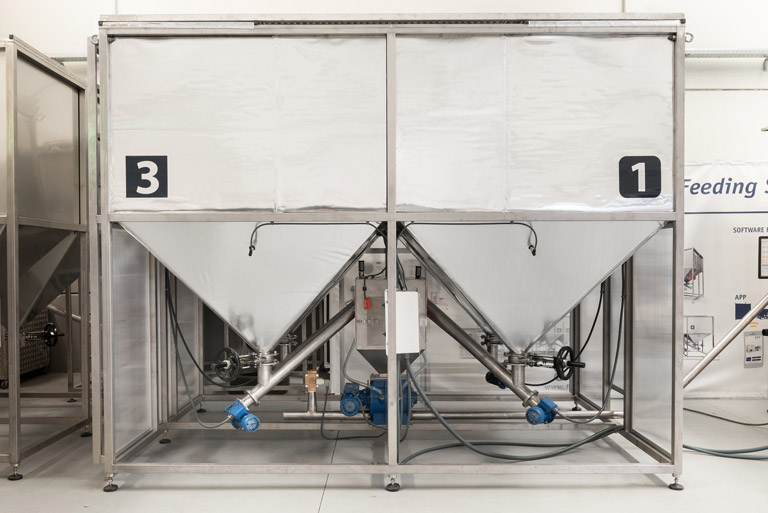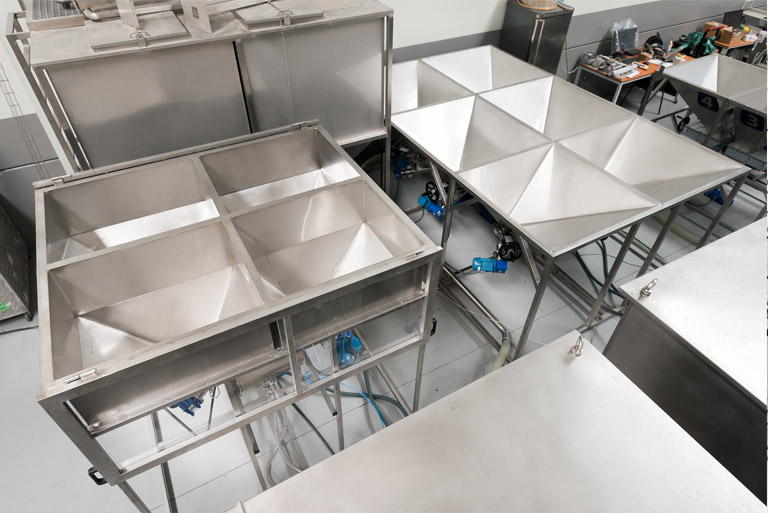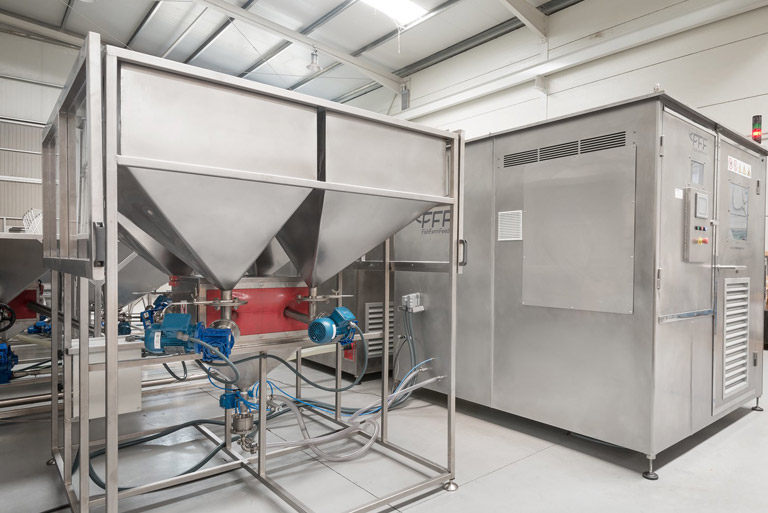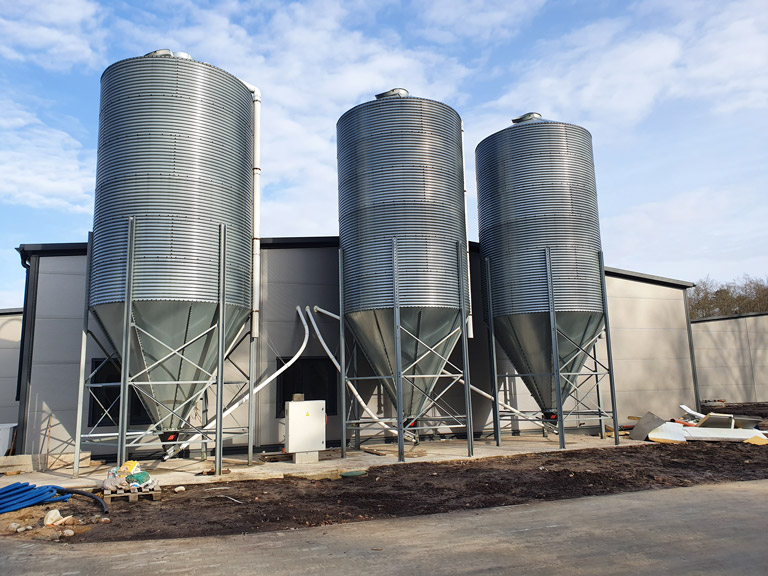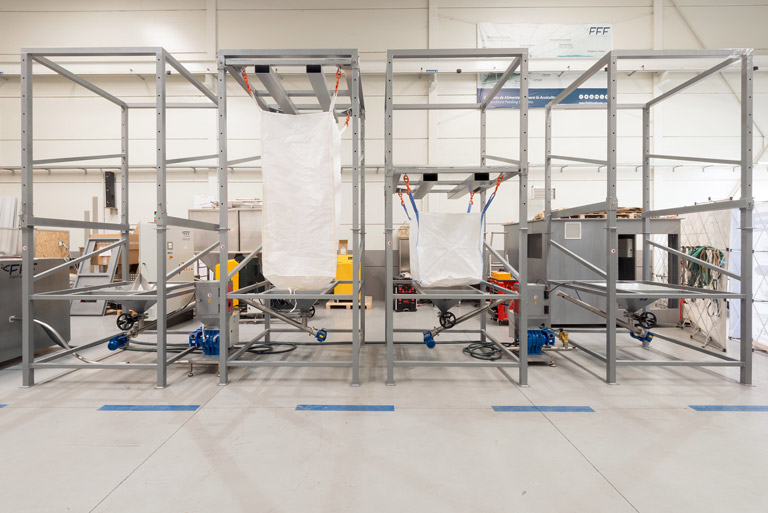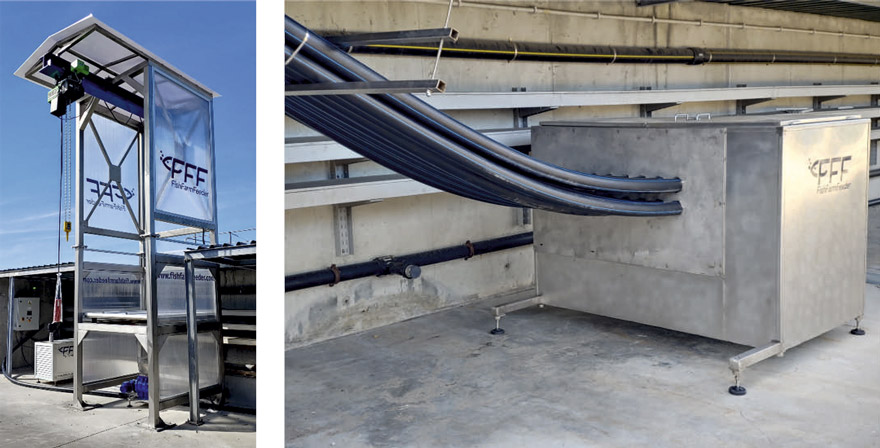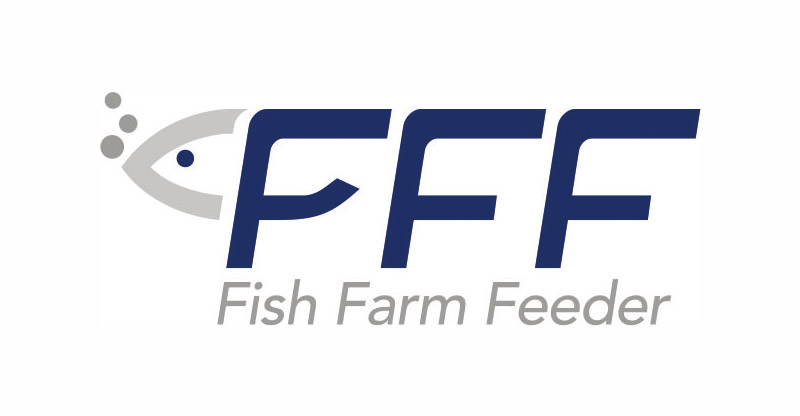Aquaculture farms cultivate numerous types of fish and shellfish. There are different sizes of pellets that are used, depending on the phase of their growth, regardless of whether they are fed by hand or automatically.
Any type of feed needs to be stored, so depending on the farm management it can be stored in two ways:
- In the case of small farms, they are stored, until its use, in the original packaging./span>
- However, for the feeding systems, which distribute the feed to the tanks or cages, it must be previously stored in one or several silos, either individual ones or centralized ones
Aquaculture Feed Supply. Forms, size, and original packaging
Fish feed manufacturers offer different ways of supplying the pellets, the most common being 20kg bags, big bags and by truck.
Silos - Feed Storage in Centralized Feeding Systems
In the case of aquaculture farms with centralized feeding systems, the feed is generally stored in silos. This step is necessary, because it helps to store each pellet size separately and deliver it to the tanks with fish or shrimp in the desired doses.
Besides silos, there are also some more economic storage forms that we explain below.
» Types of silos used in aquaculture
As mentioned, before the scheduled dose is generated by the feeding system, the fish pellets need to be stored for its further distribution to tanks. The feed storage depends on the requirements and condition of each farm. Therefore the provider of feeding system can supply the silos in different formats.
- Custom-made silos
This type of silos is manufactured in stainless steel (for salt water) or galvanized treatment (for aquaculture production in fresh water).
The volume of the silo is defined by the fish farm, reflecting the feeding needs.
The main advantages of custom-made silos are:
- Adaptation to the available space at the farm.
- Designed and manufactured to optimal pellet consumption capacity and thus contributing to reduce its unwanted deterioration.
- Standard silos
Standardized storage silos are provided by specialized companies that manufacture large capacity silos.
These silos are then integrated with the feeding systems to generate and deliver the desired doses.
The main advantage of standard silos is their price since they are usually cheaper than custom-made silos.
- BigBag Charger – Alternative storage system
In some farms it is possible to apply a solution without the need of silos.
The Big Bag charger, created by Fish Farm Feeder, uses the original packaging supplied by the fish pellet manufacturer and, thanks to its support structure the big bags are connected directly to the centralized feeder. This way the Big Bag charger substitutes a silo.
The main advantages of the Big Bag Charger are:
- Cost reduction as silos are not needed.
- It can be used in small spaces.
- The manipulation to hold the big bags is simple.
Storage Accessories used in aquaculture
» Silo Loaders
If the pellets are delivered to a fish farm in big bag format, it is necessary to have a system that allows to move the pellets to silos before its distribution to tanks. Silo loaders can be the solution. How does it work?
The bag with pellets is raised with the help of a loader to a height that allows its opening in is bottom part and guide the pellets through a pipe and distribute to the desired silo.
The chargers manufactured by Fish Farm Feeder are customizable – respecting the needs of a farm. It means that they are adapted to the space available at the farm and to the size of bags and quantity of silos that are used at the farm.
Learn about our products and their benefits for your farm!
